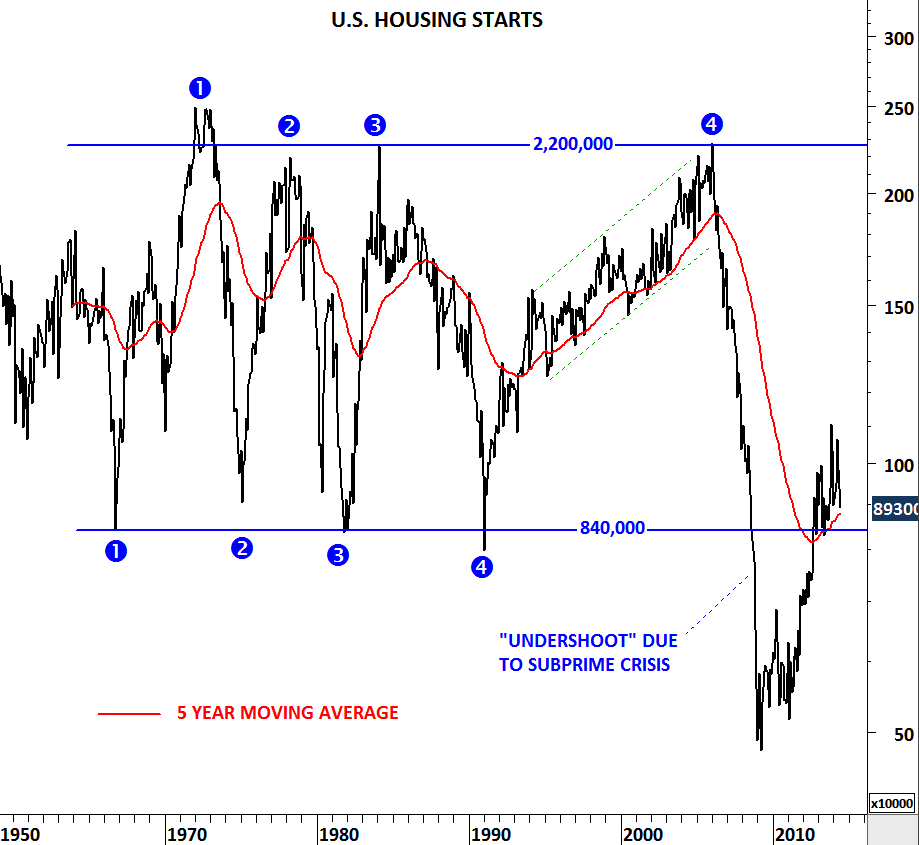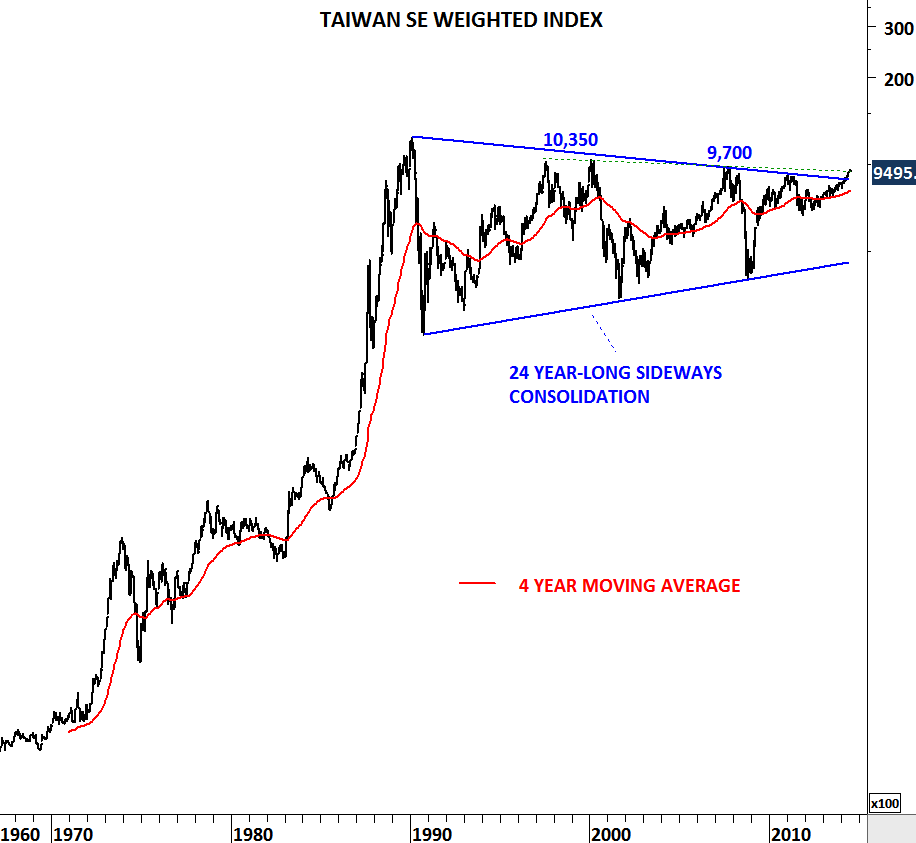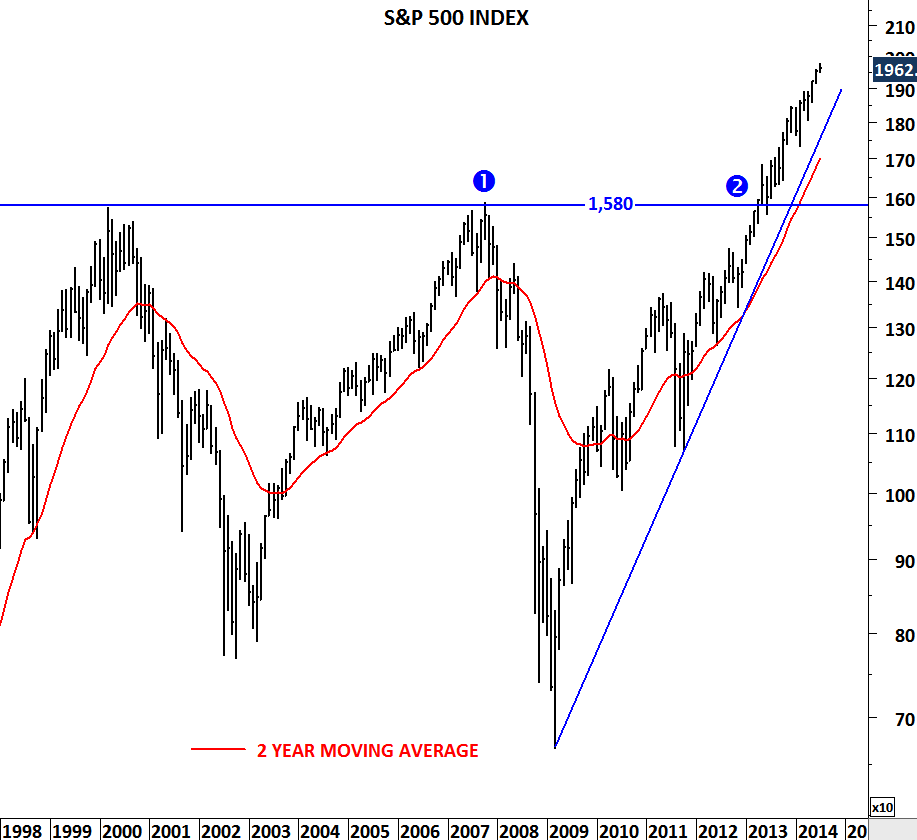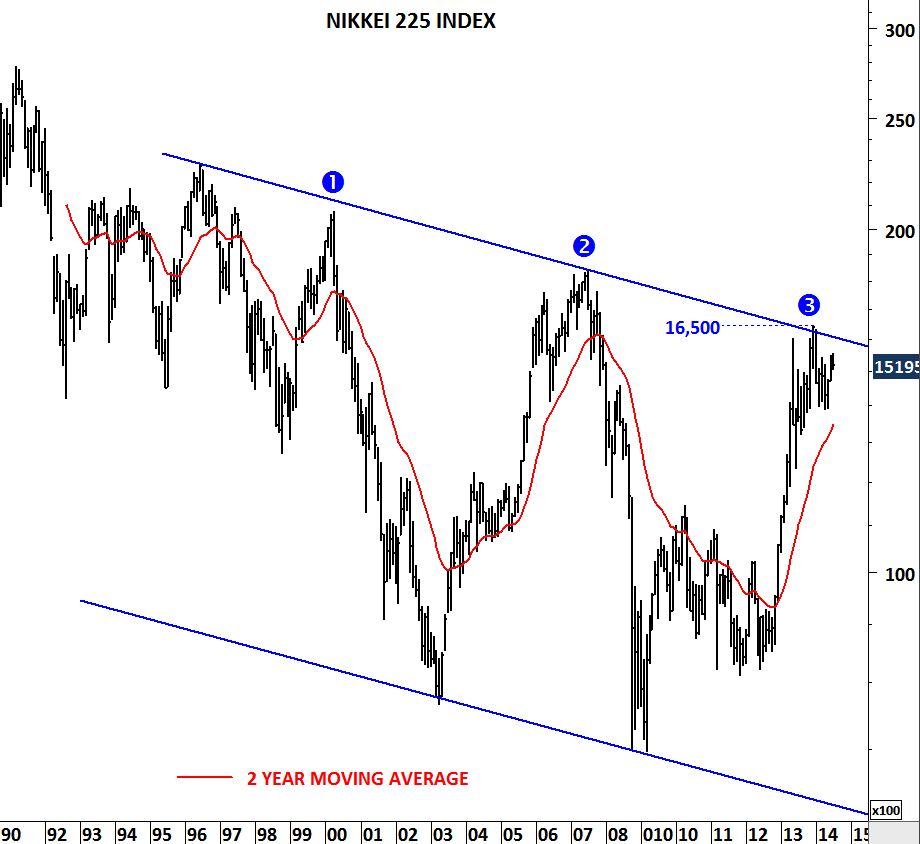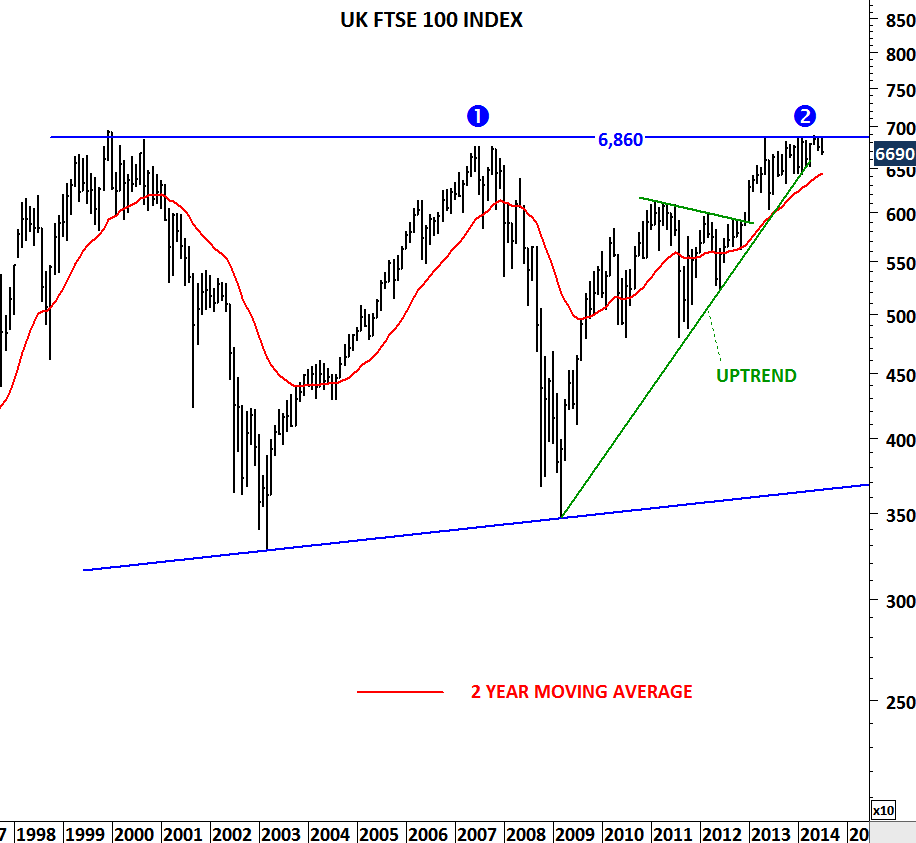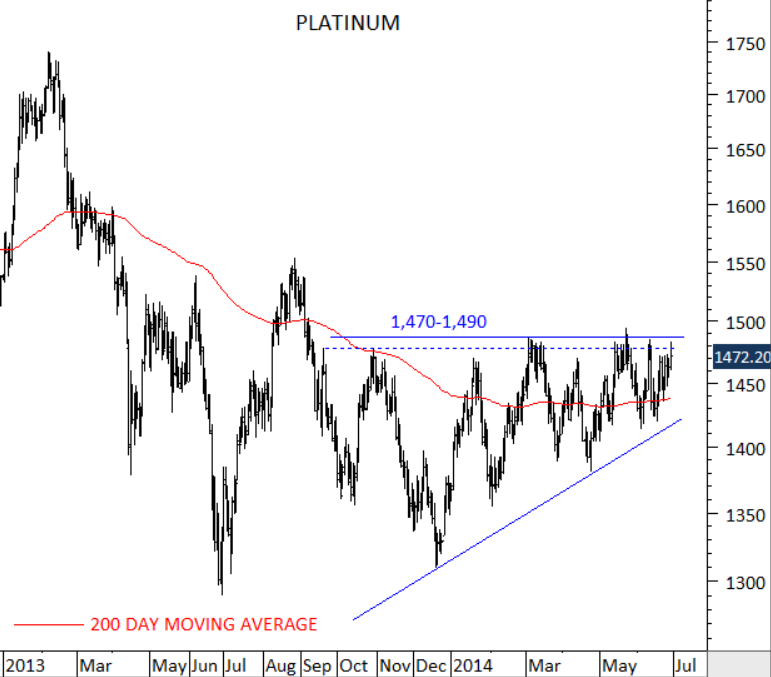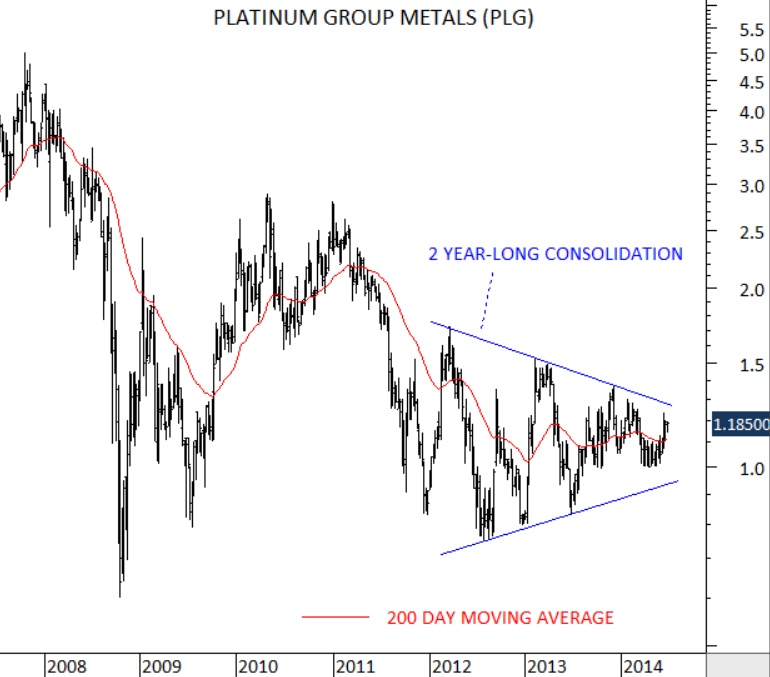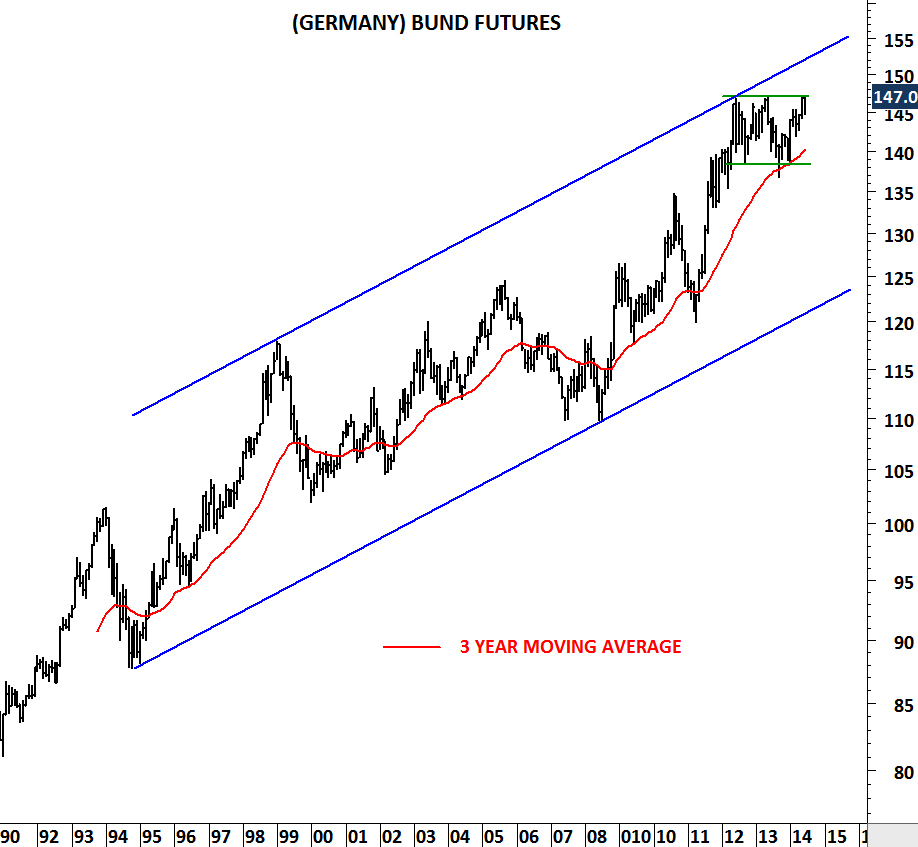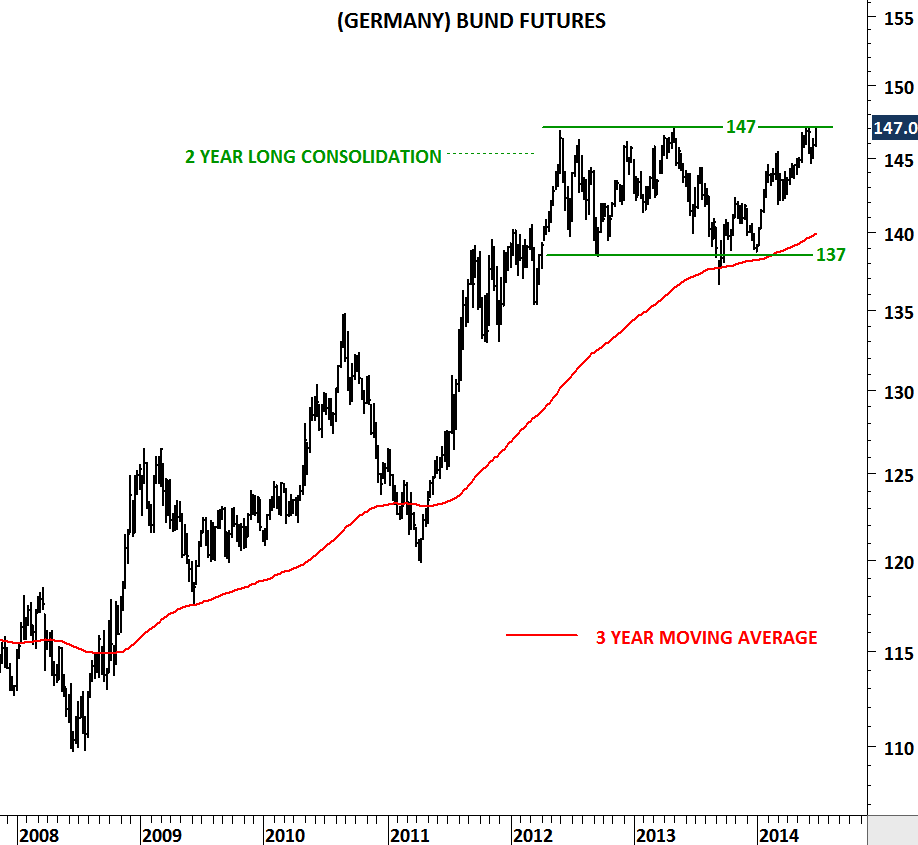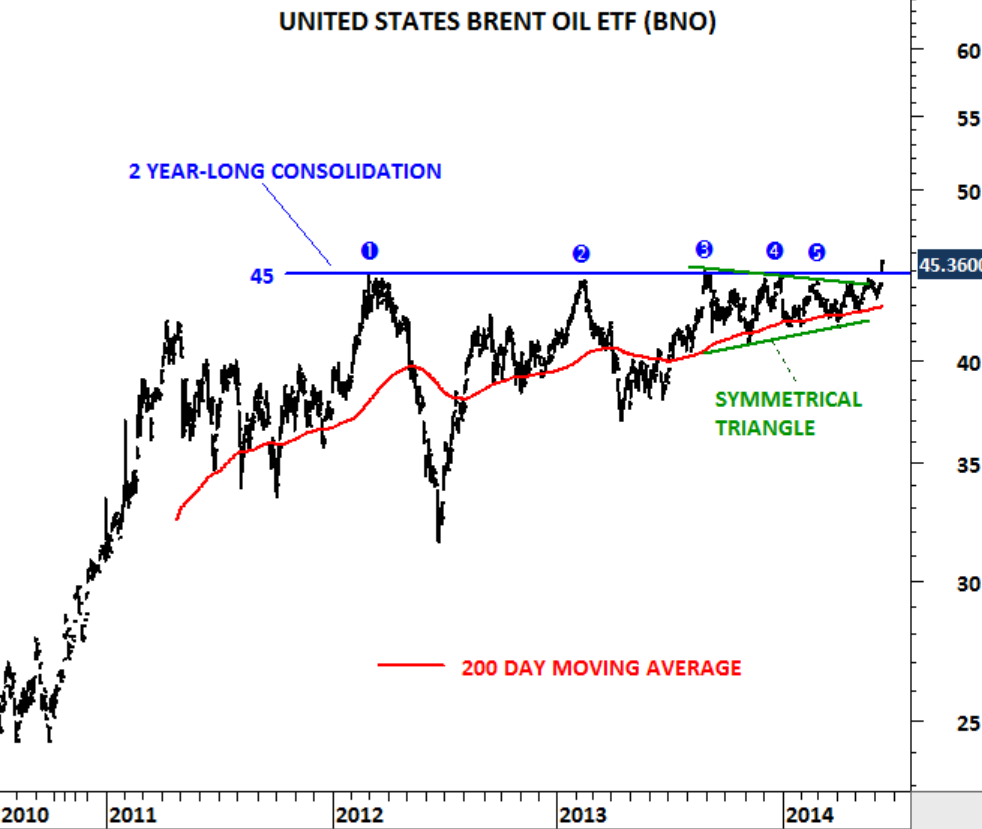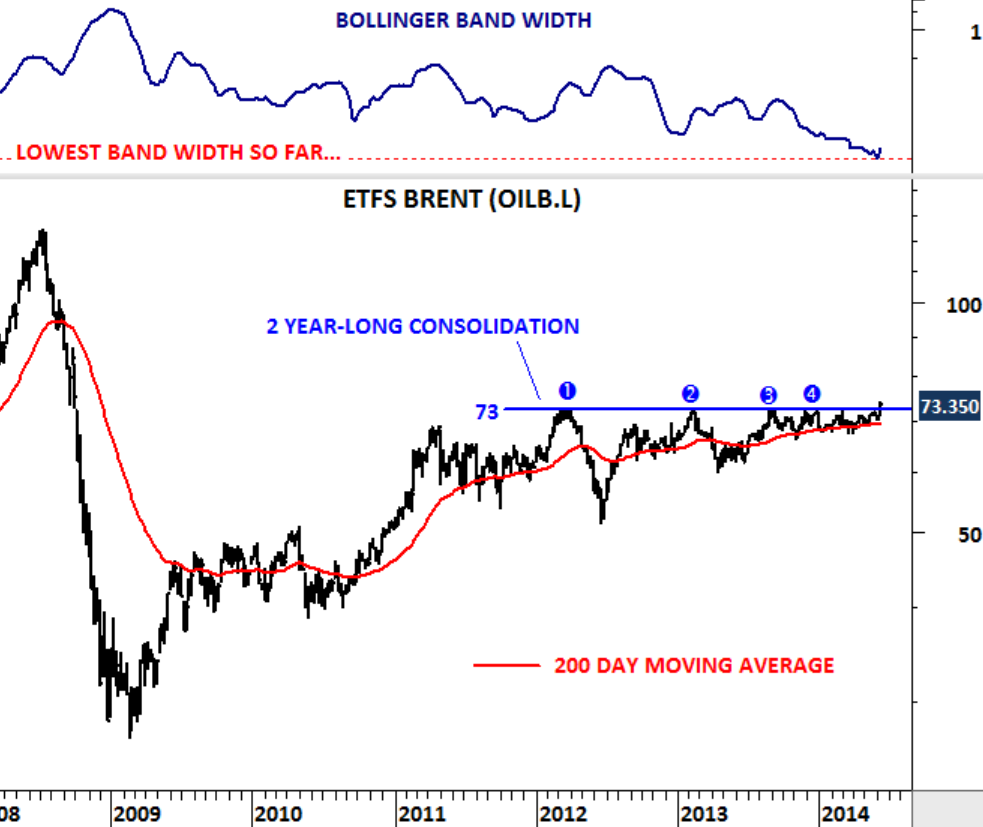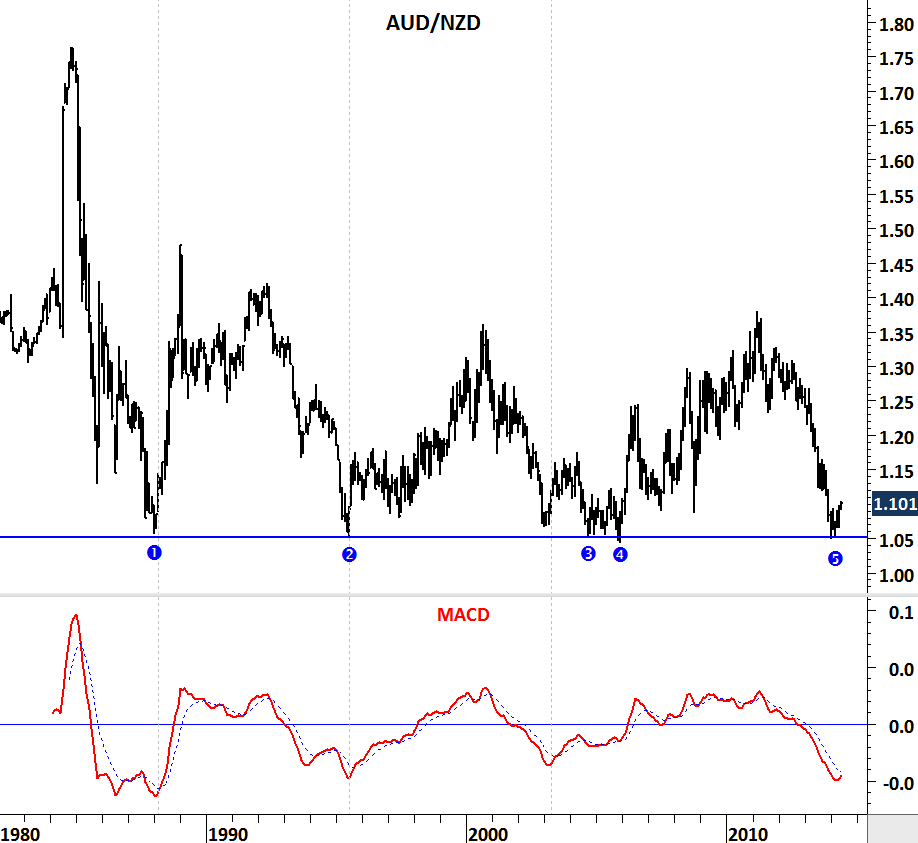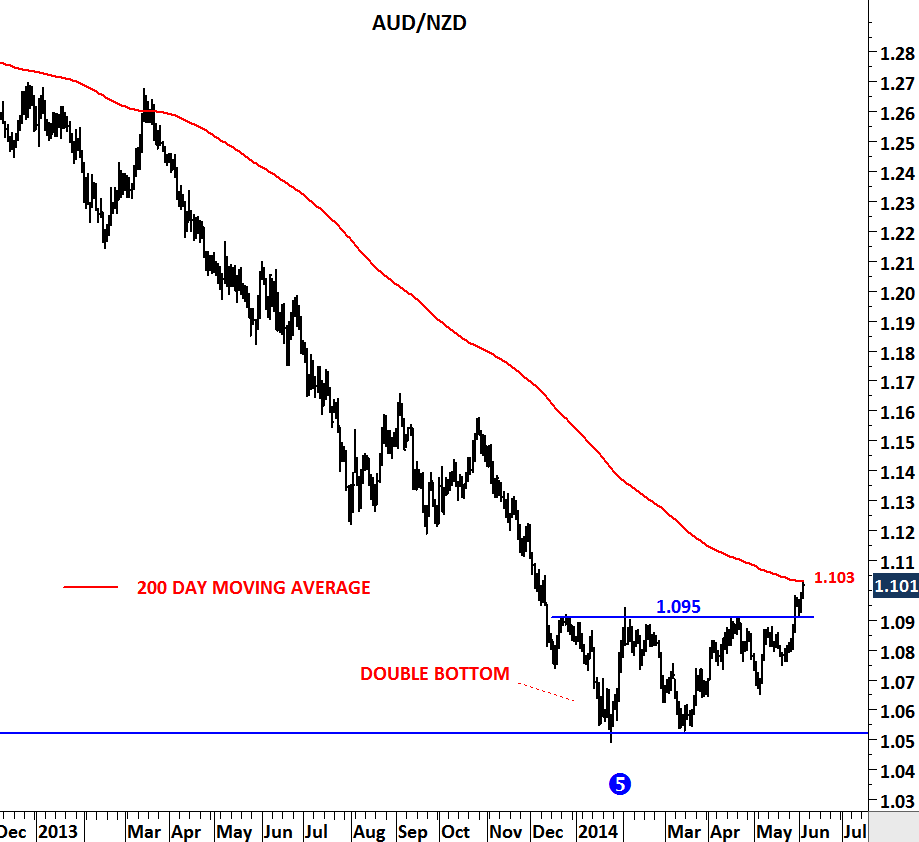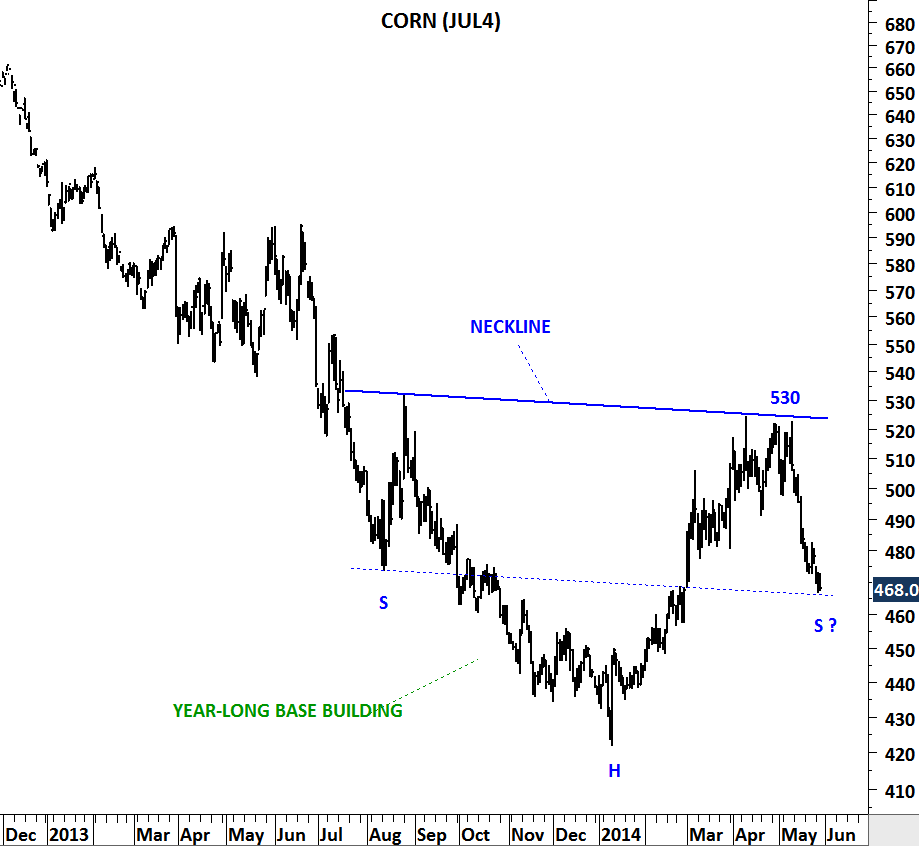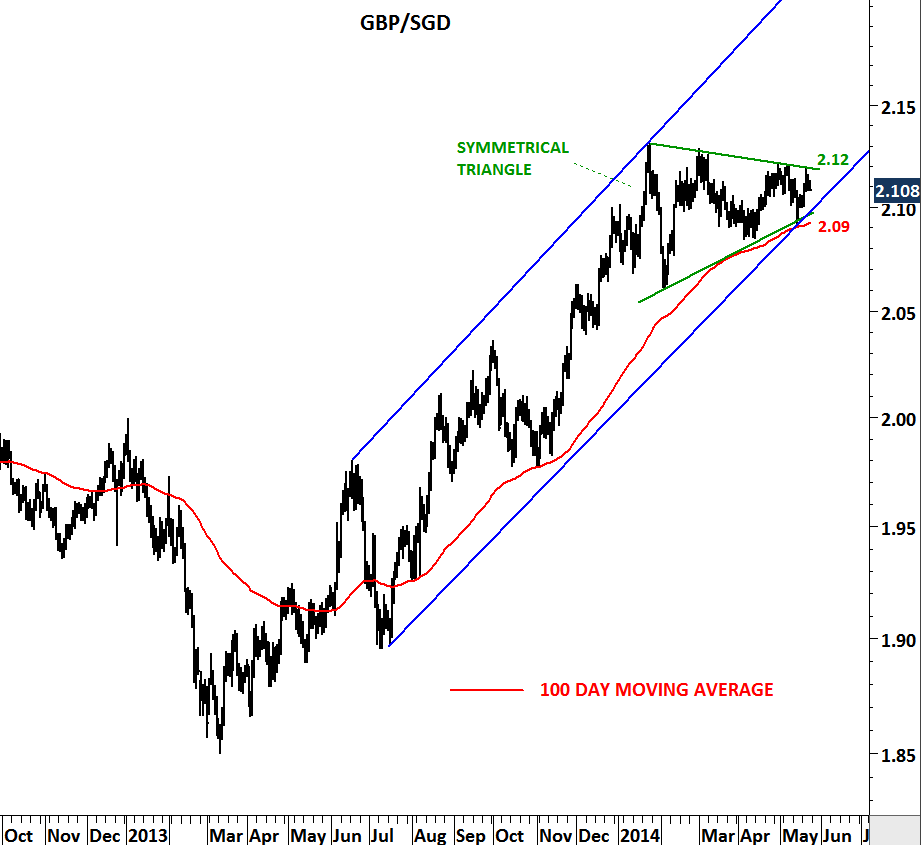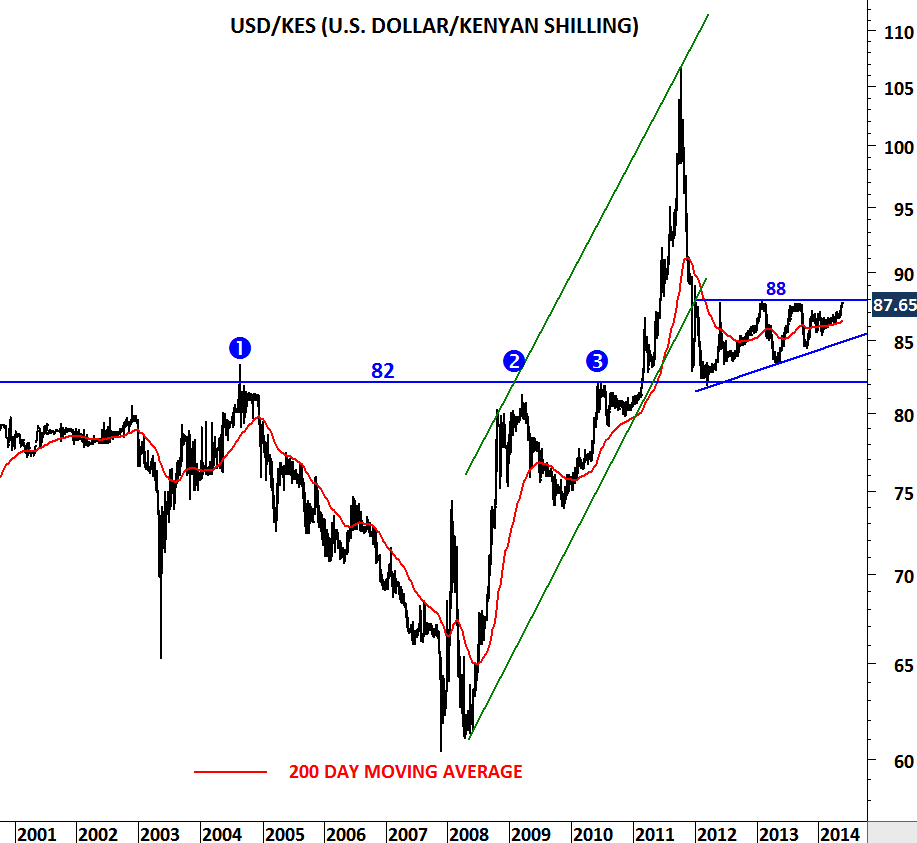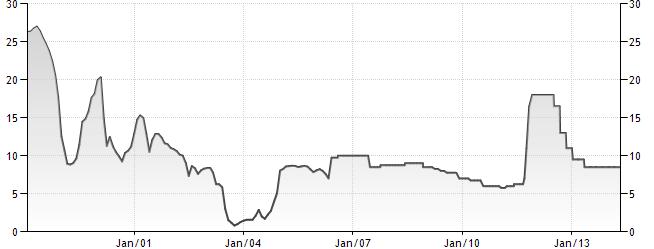U.S. HOUSING STARTS
U.S. housing starts was down another 9.3 percent in June after declining 7.3 percent in May. Latest figure stands at 893,000. Here is why we should actually pay close attention to 840,000 levels in the following months. Yes, technical analysis can also be applied to economic time series. Anything that is a product of human interaction in free markets is a subject of technical analysis and this historical chart on U.S. housing starts clearly shows the boundaries of the supply and demand.
Over the past half-century U.S. housing starts fluctuated between 2.2 million and 840,000 with one exception during the sub-prime mortgage crisis. Because the housing market was the epicenter of the financial melt-down during the 2007-2009 decline, housing starts data inevitably undershoot the 840K levels. Since October 2012, housing starts are above the historical threshold. For the housing market recovery to remain intact, housing starts should hold above 840K levels.

